PowerPoint 2010 -
Checking Spelling

PowerPoint 2010
Checking Spelling


/en/powerpoint2010/applying-transitions/content/
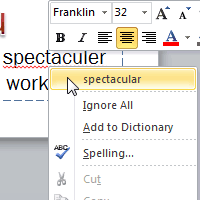
If you're worried about making mistakes when you type, don't be. PowerPoint provides you with several proofing features that will help you produce professional, error-free presentations. In this lesson, you will learn about the various proofing features, including the Spelling tool.
To make your slide show appear professional, you'll want to make sure it is free from spelling errors. PowerPoint has several options for checking your spelling. You can run a spell check, or you can allow PowerPoint to check your spelling automatically as you type.
Optional: You can download this example for extra practice.
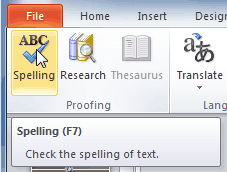 Spelling command
Spelling command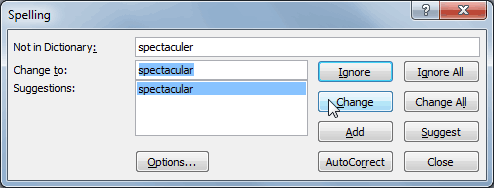 Correcting a spelling error
Correcting a spelling error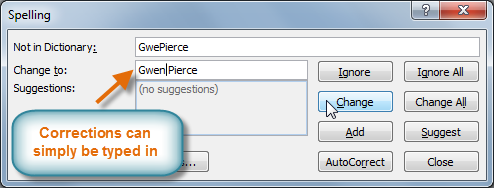 Typing a correction
Typing a correctionThe spelling check is not always correct. It will sometimes say something is spelled incorrectly when it's not. This often happens with people's names, which may not be in the dictionary.
If PowerPoint says something is an error, you can choose not to change it using one of three options:
By default, PowerPoint automatically checks your presentation for spelling errors, so you may not even need to run a separate check using the Spelling command. These errors are indicated by red wavy lines.
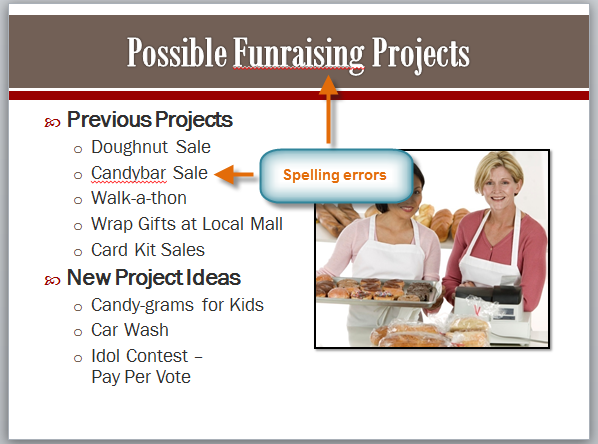 Automatic spell check errors
Automatic spell check errors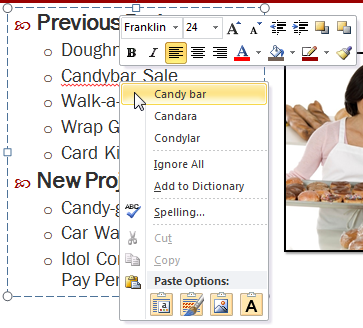 Correcting a spelling error
Correcting a spelling errorYou can choose to Ignore an underlined word, Add to Dictionary, or go to the Spelling dialog box for more options.
With customizable proofing options, PowerPoint gives you the ability to change the way it addresses spelling errors, including automatic spell check and contextual spelling. Contextual spelling—an option that is turned off by default but that can be turned on—can help you find and correct spelling mistakes like the use of too vs. two or there vs. their.
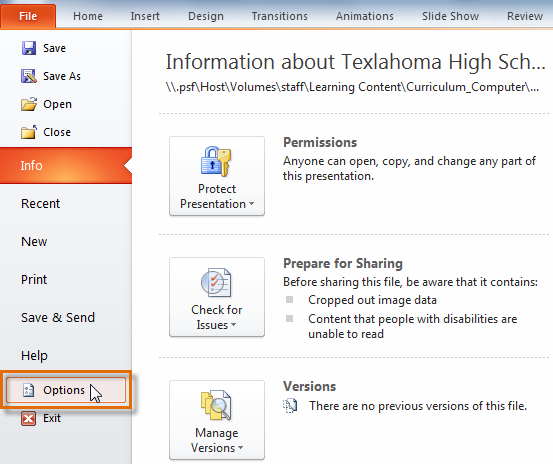 Opening PowerPoint Options
Opening PowerPoint Options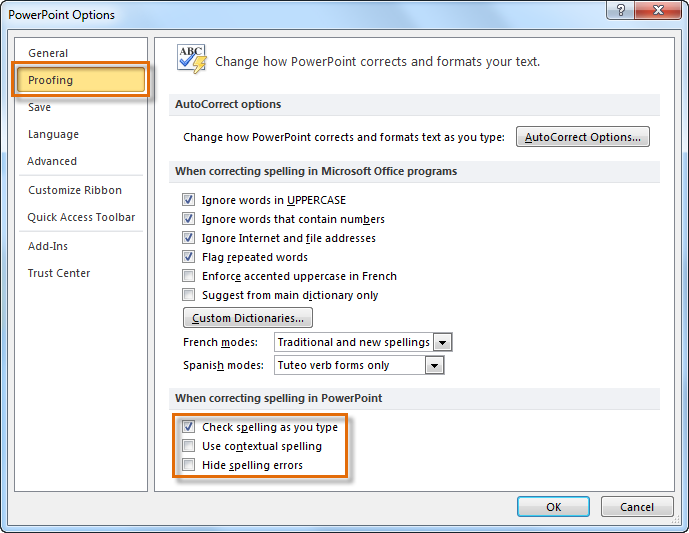 Modifying proofing options
Modifying proofing optionsIf you've turned off the automatic spell check, you can still run a check by going to the Review tab and clicking the Spelling command.
Modifying any settings in PowerPoint Options—including Proofing—affects all of PowerPoint, not just your current presentation.
/en/powerpoint2010/presenting-slide-show/content/